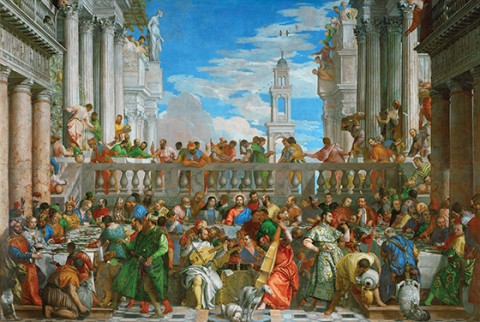The Wedding at Cana, by Paolo Veronese

In 1562, Benedictine monks commissioned Paolo Veronese to decorate the refectory at their monastery on the Venetian island of San Giorgio Maggiore. The monks contracted for a painting of monumental proportions (22 feet by 32½ feet) to cover the entire wall of their dining hall, creating the sense of extended space. The painting is inspired by the miracle of the wedding at Cana (John 2:1–11), but Veronese produced a scene that more resembles the festivities of a Venetian banquet than a wedding feast in ancient Galilee. More than 130 figures surround Christ, who is seated in the center next to Mary. They include princes, turbaned Orientals, and musicians. Nonetheless, there are significant echoes of the biblical account. In the foreground, on the viewer’s right, a servant pours wine into an ewer. A surprised nobleman, standing behind the servant, examines a glass of wine (John 2:9–10). Directly behind Christ in the background, a servant slices meat (an allusion to the “lamb” of God?). The painting hung in the refectory for more than two centuries until, in 1797, Napoleon’s troops confiscated it and (despite its size) shipped it to Paris.





